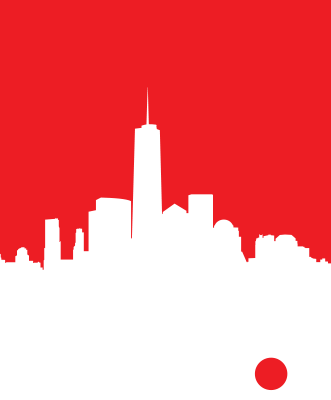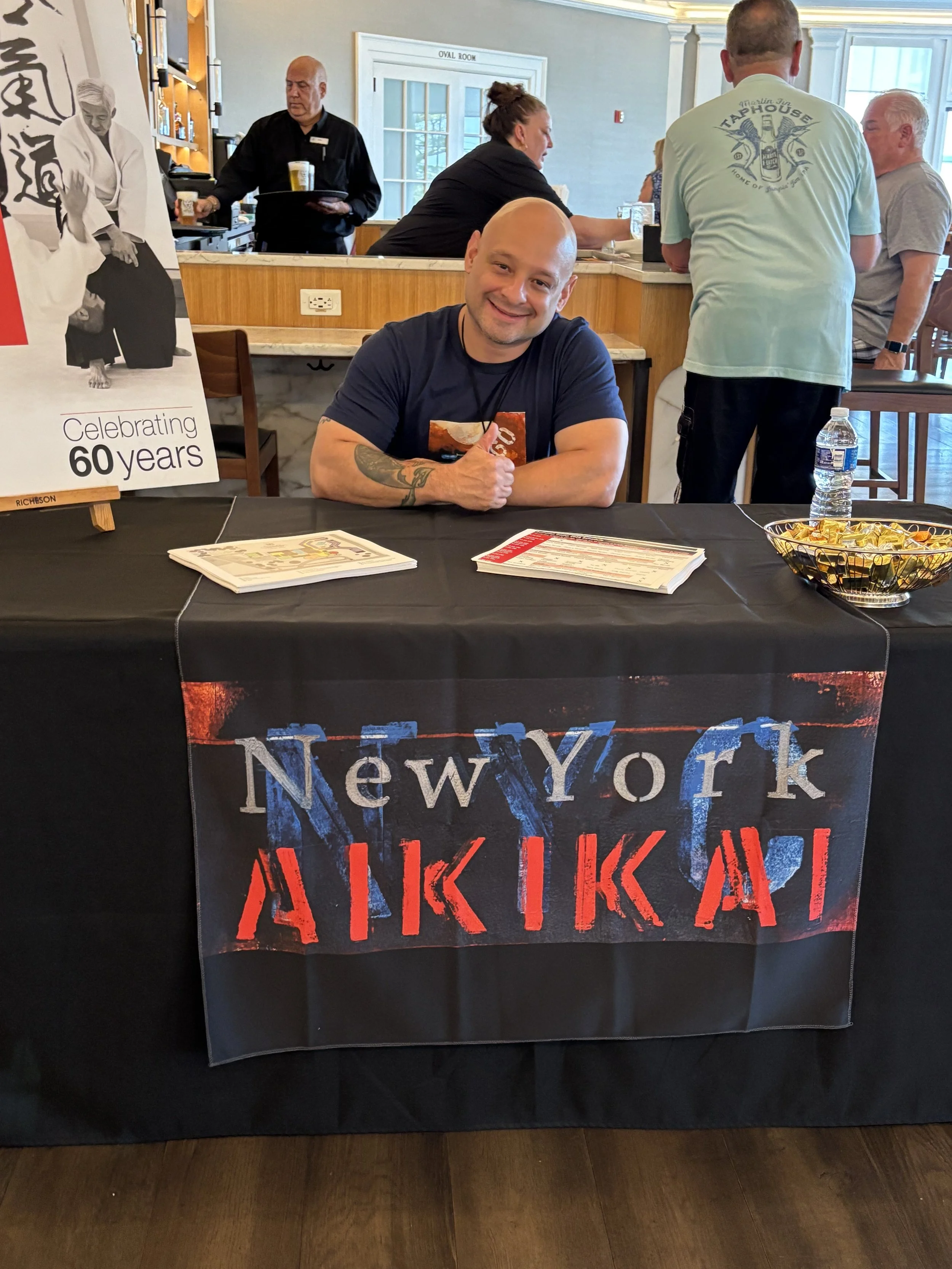NY Aikikai 60th Anniversary Artwork
Recently we interviewed Brian Dupont, the fine artist who created the artwork for our 60th anniversary merch, about his creative process, how it intersects with his aikido practice, and the meaning behind the beautiful pieces he made for us. Below is the transcript.
How has your aikido training affected your art?
It seems like both art and martial arts have always been a part of my life. I always drew as a kid, and I started practicing martial arts young as well, starting karate at 11 or 12 years old. My training has always been intertwined with figuring out where I would be.
When I went to college at the University of Minnesota, with the intention of studying graphic design or film, I switched to studying aikido, at both the U of M Aikido club and the Twin Cities Aikido Center. When I started focusing on fine art and painting I looked for a new school, and in addition to having a good painting program, I was looking for someplace that had a dojo, so when I went to the Kansas City Art Institute I was also able to train at the Kansas City Aikido School. Likewise, when I went to grad school at Cornell, I was also able to study at the Cornell Aikido Club. When I was done with school and moved to New York City, the New York Aikikai was waiting for me.
How does your training influence your creative process?
Like most people, I work better when I’m exercising regularly, but really there’s something about the mindset of stepping on the mat or going into the studio to work that are very similar. You want to have a clear mind, and while you are building on your previous practice, you also want to keep an open mind so that you can draw new connections.
How does your aikido reflect your art?
That’s a tough one. On one hand, there isn’t really a direct connection; I don’t think of the movements of aikido as relating to the gestures or way I handle material in my drawings and paintings. I try to keep my aikido “styleless,” but on the other hand, everything someone does can reveal their personality and the influences of their teachers, so that’s probably not really possible…
At a certain point, all aikidoka have a personality in their practice that's built out of their movements. It's very similar to the way that who an artist is comes out in their work; there may be formal constraints, but at the highest levels who a person is manifests in how they move and think. At the NY Aikikai, Yamada Sensei really encouraged his students to find their own path and because of that we have so many great teachers who have very different styles of aikido. It’s a very welcoming approach, and if anything I want to have that kind of openness in my art.
When you were creating the art for our 60th anniversary, what elements of our identity or story were you being drawn towards?
One of the things that I think grounds me is a sense of place, and really that’s New York City and its sense of history. That comes out in my engagement with surfaces, and I much prefer something that shows life and use than a slick, pristine surface. I was thinking about the dojo and its space on West 18th Street, and the history in the space, the building. So my starting point came out of our capital campaign It Couldn’t Happen Anywhere Else, thinking both about the past and what Yamada Sensei built, and then what we’ll build it into.
Since this was for the 60th Anniversary, I wanted this design to stand out, to be something that didn’t look like any other aikido T-shirts (which is tough, there are a lot of designs). In the end this looks very much like my paintings, which are focused on text, process and color.
What materials did you choose to work with, and why?
Making a shirt was a bit daunting; I’m a painter and not a designer, and I wasn’t really sure what the process was to turn whatever I put on paper into a finished T-shirt, and of course we wanted to have them ready for summer camp. I started with a piece of paper and my usual drawing supplies, which is basically anything that’s not oil paint, so whatever I put down would dry quickly. I just wanted to get something down, so I’d have something to react against, but once I started working it came out very easily. And luckily we had a great team able to turn what were essentially a series of paintings on paper into finished apparel.




